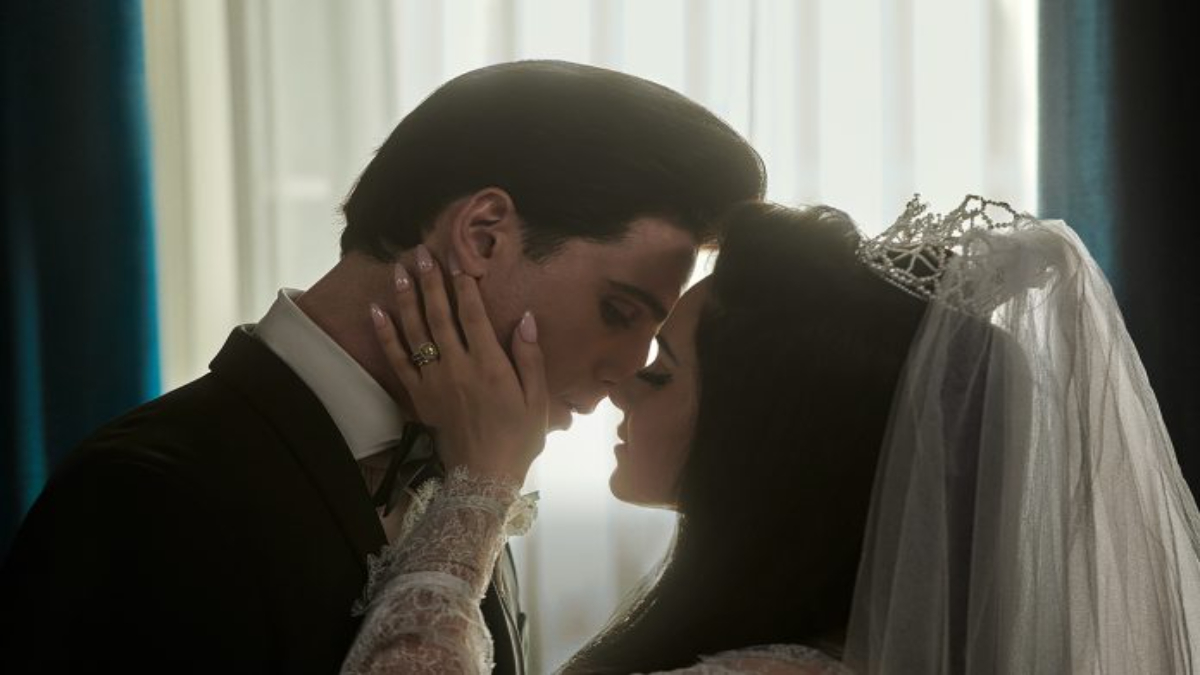
Advertisement
The next movie by renowned author-director Sofia Coppola (director of Lost In Translation) is a remake of Priscilla Presley’s 1985 autobiography Elvis And Me, and it had its world premiere at the Venice Film Festival. Presley herself served as executive producer, so it should come as no surprise that Coppola’s writing mostly adheres to the original.
Priscilla Analysis
Beginning in 1959, when Elvis (Euphoria’s Jacob Elordi) is stationed in West Germany for military duty, 14-year-old Priscilla (Cailee Spaeny) meets him for the first time. Elvis pursues Priscilla and finally takes her into his Memphis home, but Priscilla becomes upset and perplexed when he insists that they wait until their wedding night to have sex.
As their relationship progresses into the 1960s and 1970s, Priscilla experiences a variety of patterns of controlling and manipulative behaviour, including Elvis giving her pills, having multiple affairs (while still avoiding sleeping with his wife), and asking her to choose between being his wife and having a career. Also made obvious is Elvis’ potential for violence (he tells the woman after tossing a chair at her, “I’ve got my mamma’s temper”).
Coppola intentionally frames the plot as Priscilla’s departure from a poisonous and violent relationship, as the film’s abrupt but happy climax shows. As a result, it’s intriguing to see how the tale develops from Priscilla’s point of view since, up until this point, Elvis has mainly been depicted positively on television, and there are parts of their relationship that are likely to surprise anyone who isn’t already aware with her actual story.
In her role as Priscilla, Spaeny excels, allowing you to experience every agonising step of her emotional journey—from initial misunderstanding and attraction to heartache and, ultimately, self-discovery. Elordi does an excellent job of portraying Elvis, capturing the charismatic force of the King and making the performance appear more natural than expertly timed. In the early moments, notably at their first meeting when they connect through a shared longing for Texas, he also exhibits touching chemistry with Spaeny.
Because Coppola chose to show the main relationship as fundamentally claustrophobic and gloomy, she was forced to make a few decisions that almost didn’t work. Underscoring Priscilla’s isolation are the lighting choices, with many indoor sequences taking place in deep shadow, and the fact that none of the supporting characters are really fleshed out (we never even see Colonel Tom Parker, previously portrayed by Tom Hanks in last year’s Elvis). This is particularly annoying since you feel like there should be more colour, especially in the otherwise stunning production design and costumes.
On a similar note, Coppola jams the movie with memorable details and scenes, including: a shot of Priscilla’s matching guns and outfits being laid out on her bed; a signature shot of a pink chandelier during Elvis and Priscilla’s ostensibly one and only acid trip; and a sweet throwaway scene where she uses her Elvis connection to steal a student’s exam paper.
Highlights from the soundtrack include a slowed-down acoustic version of “Heartbreak Hotel,” a hula song that plays during the wedding sequence, and a pitch-perfect final needle-drop that is essentially a huge Easter egg for Elvis nerds and is worth looking up after the fact. Coppola’s soundtrack choices are, as usual, the icing on an already delicious cake.
